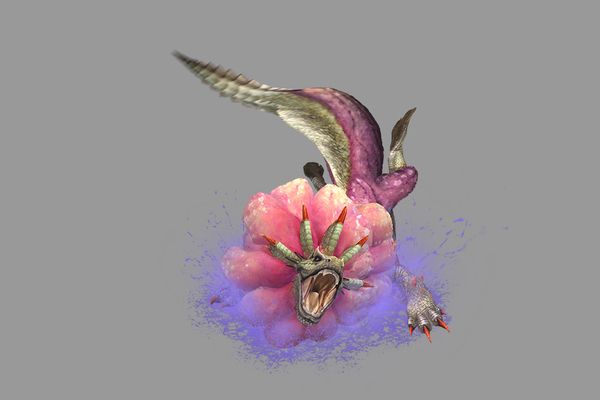
Monster Hunter 3 Ultimate – Localization Notes Part 3
Mar 07, 2013 // Andrew Alfonso
Hey everyone, Andrew here again, a Localization Director at Capcom Japan. We’re only one month away from the release of Monster Hunter 3 Ultimate! Whenever the release of one of my must-buy games draws near, I start to get super excited about getting my hands on it, so I totally understand how all of you MH fans are feeling right now. Hang in there!
The past two blog entries dealt with a lot of monsters that made their series debut after the release of Monster Hunter Tri, so this time around I thought we’d take a look at all of the new subspecies that are based on the original Monster Hunter Tri cast.
As you know, subspecies in the Monster Hunter series are just called “subspecies” in Japanese, but in the localized versions we called them by their color to give them a more unique feel. For Monster Hunter 3 Ultimate, we took this further by using more distinct names that still referenced their color whenever possible (you’ll know why I wrote it like this when you take a look at some of the examples…), but added a bit more nuance or flair to the name overall.
Purple Ludroth
When we sat down to work on the monster names – it was the first thing we had to complete – we immediately came across a problem with the Royal Ludroth name. Including spaces, monster names have to be 16 letters or less, and “Royal Ludroth” was already at 13, so when it came to naming the subspecies, we had to take off its crown, so to speak, and work with the base Ludroth name.
We first thought to name it “Poison Ludroth” because of its ability to spit out poisonous balls of water. However this didn’t convey the color of the monster because poison can come in various colors. Heck, sometimes it doesn’t even have a color! Because of this, we went with a simpler moniker and dubbed it “Purple Ludroth”. Ideally we would have liked Purple Royal Ludroth but that wasn’t going to happen due to space restrictions.
For the localized versions, Purple Ludroth is Ludroth pourpre in French, Lila Ludroth in German, Ludroth purpureo in Italian, and Ludroth purpúreo in Spanish.
Jade Barroth
I like to think of Barroth as the point of no return for many Monster Hunter beginners. It’s the first real test of your ability in the original Tri, so defeating this monster means that you’re ready to tackle the rest of the beasts in the game.
The subspecies of Barroth encases itself in ice and has some vicious charging attacks that deviate greatly from the original species. Many people mistakenly attribute its blue-green color to the ice covering its body, but it’s actually its skin that is bluish-green. Combine this unique coloring with the thickness and toughness of its hide and we felt that Jade Barroth would be an excellent name for the subspecies.
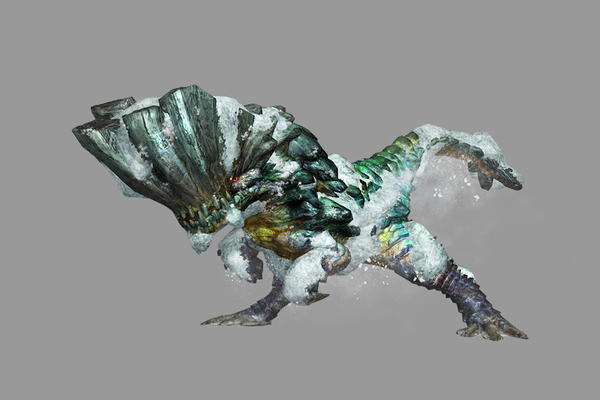
For the localized versions, Jade Barroth is Barroth de jade in French, Jade-Barroth in German, Barroth di giada in Italian, and Barroth esmeralda in Spanish.
Sand Barioth
The subspecies of Barioth can usually be found in the Sandy Plains; freezing cold by night, but sweltering hot during the day. Much like how the original Barioth of the Tundra blends into its icy surroundings, the subspecies doesn’t stand out from its habitat either. Considering its size, that’s a pretty big accomplishment!
We call this subspecies the Sand Barioth because of its color and also because of the area it makes its home in, and we think you’ll agree that it’s a fitting name!
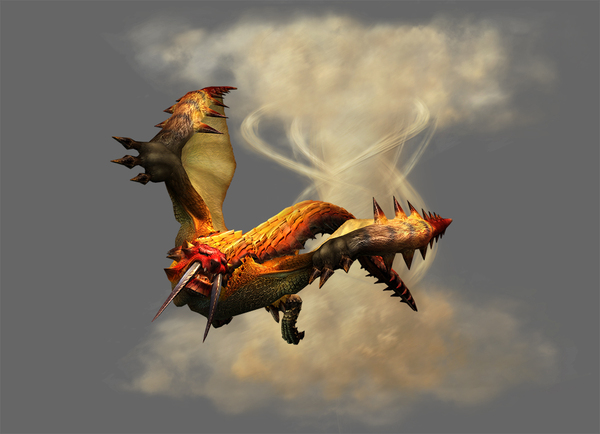
For the localized versions, Sand Barioth is Barioth des sables in French, Sand-Barioth in German, Barioth delle sabbie in Italian, and Barioth arenoso in Spanish.
Baleful Gigginox
I hate Gigginox. A lot. I actually hate it more than the Khezu from the earlier games. It’s just so… gross! Oddly enough, apparently Gigginox has somewhat of a cult following in Japan… among women. Different strokes for different folks, I guess!
At first we proposed the name “Copper Gigginox” due to its normal skin color. We felt that it was the best way to describe it. However, the MH team wanted to emphasize the fact that the monster can paralyze you with its lightning attacks, and thought that the word “Copper” didn’t do that. They also thought the color of the monster wasn’t necessarily copper, so they asked us to come up with more ideas.
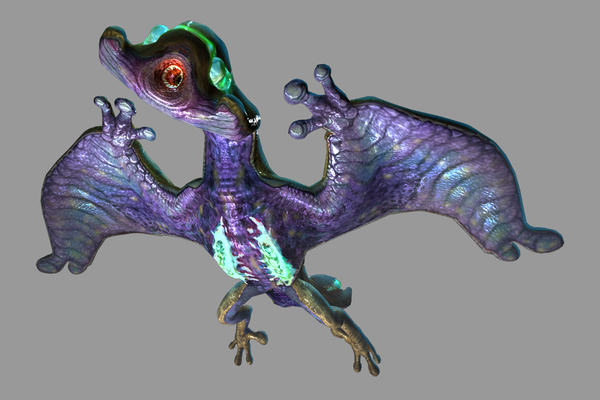
We came back with three more options for them: Volten, Dread, and Baleful. Volten was a play on voltage, referring to the monster’s electrical attacks. Baleful because it conjured up the color yellow and also had a paralyzing nuance to it, and Dread because everyone freaking dreads fighting this monster!
Out of those three, the MH staff felt that Baleful was the best fit for the creature, and I agree! It’s a word full of nuances, and it also has a very unique sound to it.
For the European versions, Baleful Gigginox is Gigginox foudroyant in French, Unheils-Gigginox in German, Gigginox malefico in Italian, and Gigginox aterrador in Spanish.
Crimson Qurupeco
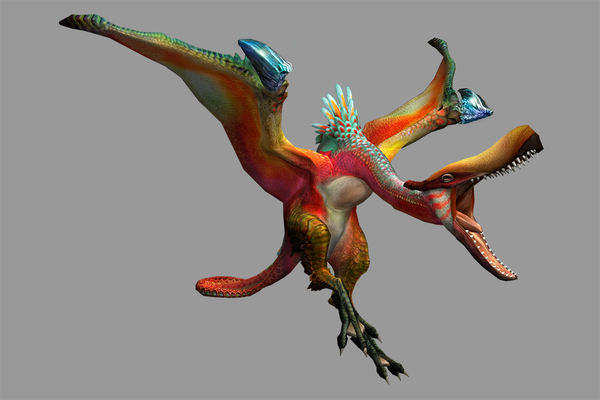
Compared to Baleful Gigginox, naming the subspecies for the most flamboyant monster in the MH series was a piece of cake. The Japanese kanji name for Crimson Qurupeco, benisaichou (紅彩鳥), makes reference to the color red, so this made it easy for us to name it. We did toss around the idea of going with Rouge Qurupeco, but we thought people would mix up Rouge and Rogue at times, whereas Crimson is pretty hard to mess up.
For the European versions, Crimson Qurupeco is Qurupeco vermillon in French, Karmesin-Qurupeco in German, Qurupeco cremisi in Italian, and Qurupeco carmesí in Spanish.
Glacial Agnaktor
You’d think that a leviathan that cruises through the Tundra would be an easy monster to name, right? Well, you thought wrong! Out of all the subspecies this was one of the harder names to settle on. We had originally thought that this monster was an ice element only monster, so we came up with proposed names such as Glacial, Frost, Cobalt, and Ice, but the team told us that the monster also has water element attacks so they wanted us to go back and rethink the names.
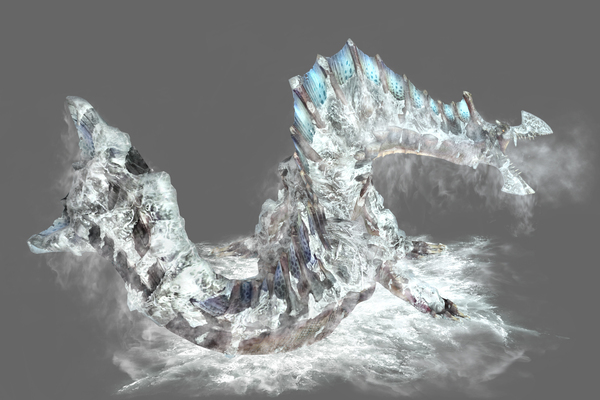
We thought about it again but we still felt that Glacial was the best fit. We came up with a couple of other proposals such as Cobalt and Polar, but we stressed that Glacial was the perfect fit because it’s a word that not only sounds cool, but also held connotations for both water and ice. Plus glaciers can shimmer like the ****ens! After approaching the team again, they said they were fine with Glacial given our reasons.
For the European versions, Glacial Agnaktor is Agnaktor glacial in French, Gletscher-Agnaktor in German, Agnaktor glaciale in Italian, and Agnaktor glacial in Spanish.
Steel Uragaan
Like the Crimson Qurupeco, we based the Steel Uragaan’s name off of the original Japanese. The sound effect that Steel Uragaan makes also has a slight metallic sound to it so we settled on this name very quickly compared to other monsters.
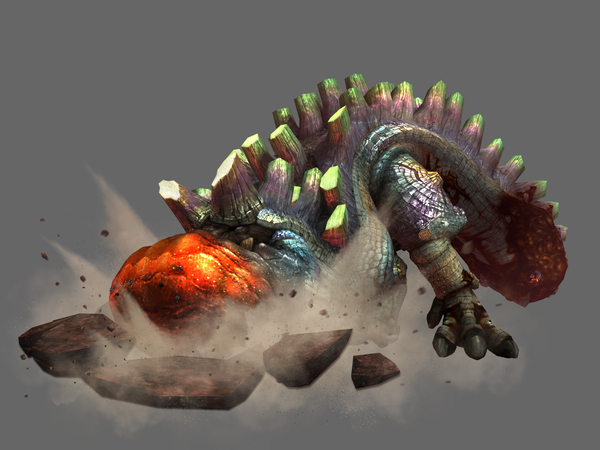
For the European versions, Steel Uragaan is Uragaan d’acier in French, Stahl-Uragaan in German, Uragaan d’acciaio in Italian, and Uragaan acerado in Spanish.
Thanks for reading everyone! Check back next time for the final installment!
-
Brands:Tags:
-

Loading...
Platforms:
